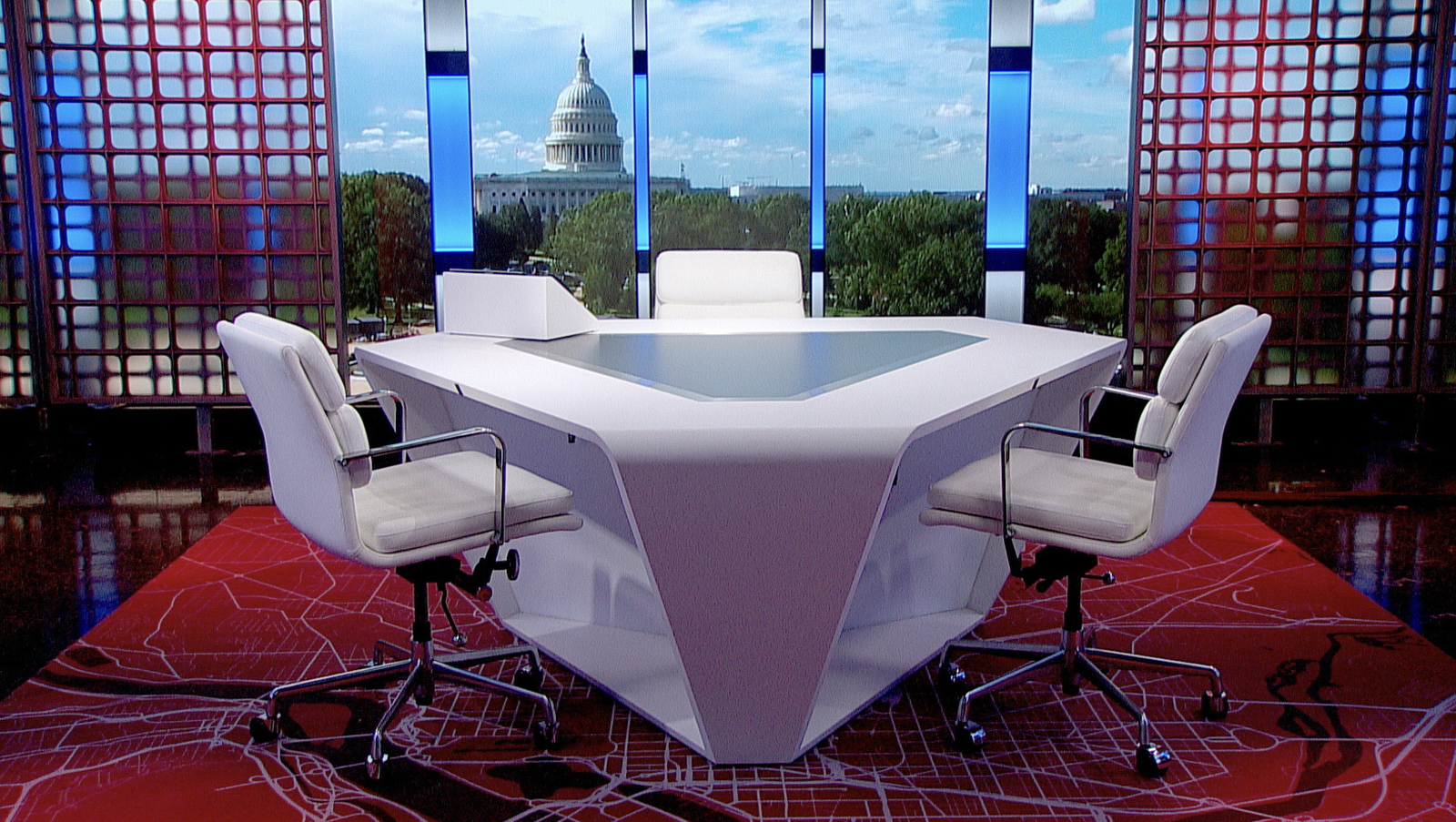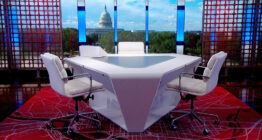‘Washington Journal’ moves to flexible new studio

Subscribe to NCS for the latest news, project case studies and product announcements in broadcast technology, creative design and engineering delivered to your inbox.
C-SPAN’s “Washington Journal” debuted an updated look Oct. 10, 2023.
The political call-in program previously broadcast from a windowed studio on the sixth floor of 400 N. Capitol Street, a facility that other networks also use, including NBC News and Fox.
While NBC and Fox still have the option to use the windows overlooking the Capitol for some shots, it’s fallen out of favor with the popularity of video walls.

C-SPAN consolidated “Journal” along with other production space to the first floor of the building, with the program now sharing space inside Studio A. Although the move resulted in the loss of real windows, it also eliminated the issues that came with southern exposure, such as dealing with shifting sunlight due to seasonal and weather changes.
The new location eliminates these issues and, since it’s not tied to using a specific wall to dictate its background, it also allows for a more flexible layout that makes conservations better.
Instead of the real windows, C-SPAN invested in outfitting the space with numerous LED video panels that can serve as virtual windows to showcase the Washington, D.C., skyline, whether live feeds or recorded views.
Designed by Eric Siegel and George Allison, the space’s design brings a fresh take on how the show is shot.
Three sides of the studio are outfitted with vertical LED panels from Exo Visual on tracks that can be used in a variety of combinations, including options for wide continuous spans.

The heart of the new set is a triangular desk that encourages natural conversation.

Six strategically placed robotic PTZ cameras allow the show to capture guests and hosts without relying on awkward profile views when the person turns to one side. It also keeps both of a person’s eyes visible in most shots, again lending to a more natural feel for viewers.
A seventh camera is mounted in the ceiling to capture the surface of the desk, including when hosts lay out newspaper headlines and documents related to the conversation.

Surrounding the desk are blue background walls with diffused panels featuring a red grid pattern. Build by sandwiching a clear sheet of diffused material between two lattice-like elements offset from each other, blurring the one on the reverse.

Under the main desk is a bold red and white rug with a District of Columbia map woven in.
While the new set was designed for “Journal” specifically, its tracking elements and LED video panels mean its look can be easily changed for other programming, including coverage of special events such as the State of the Union or election night.
Project credits
- Scenic design: Eric Siegel & George Allison
- Scenic fabrication: Blackwalnut
- Lighting design: Devon Allen
- LED displays: Exo Visual
Subscribe to NCS for the latest news, project case studies and product announcements in broadcast technology, creative design and engineering delivered to your inbox.






tags
Blackwalnut, C-SPAN, Devon Allen, Eric Siegel, Exo Visual, George Allison Design, Washington Journal
categories
Broadcast Design, Broadcast Industry News, Heroes, Set Design